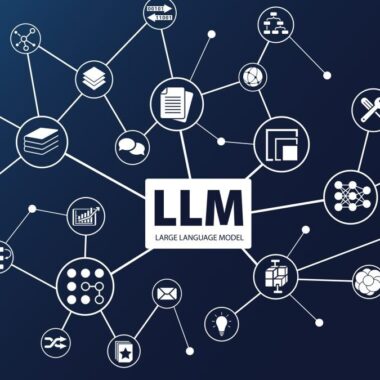As we delve into the dynamic world of implementing, executing and monitoring artificial intelligence (AI), let us take a step back, witness this remarkable evolution, and see the bigger picute of what is happening in the corporate world with AI. Participants in our AI certification course, are at the forefront of this evolving narrative. Embrace the challenges and opportunities AI presents, and prepare to be part of the innovation that will shape the future of technology.
Generative AI faces significant challenges two years post-launch, notably the rising energy costs associated with developing and deploying larger AI models. Despite these obstacles, a wave of creativity and innovation from researchers and self-confident entrepreneurs influences the AI landscape, which companies thrive, how investors navigate the market, and which nations emerge as leaders in this pivotal technology.
The Energy Challenge
Large language models, such as OpenAI’s GPT-4, have an enormous appetite for electricity—enough energy to power 50 American homes for a century during their training phase alone. As these models increase in size, the financial implications also escalate dramatically. Current estimates suggest that training the most significant models could cost around $100 million, with future iterations potentially reaching $1 billion or even $10 billion. The computational costs for querying these models can be staggering, ranging from $2,400 to a jaw-dropping $223,000 to summarize the financial reports of the world’s 58,000 public companies. If inference costs continue accumulating at this rate, they could exceed training expenses, raising questions about the economic viability of generative AI.
Investor Concerns
This scenario raises alarms for investors heavily invested in AI, particularly in companies like Nvidia, which designs the chips most commonly used for AI applications. Nvidia’s market capitalization has soared by $2.5 trillion over the past two years, while venture capitalists have poured nearly $95 billion into AI startups since the beginning of 2023. OpenAI, the creator of ChatGPT, is reportedly aiming for a valuation of $150 billion, positioning itself as one of the largest private tech firms globally.
Take A Historical Perspective on Innovation
Despite these challenges, there’s no reason for panic. History has shown us that many technologies encounter limitations only to flourish through human ingenuity. For instance, the challenges faced during the space exploration era led to innovations that benefit life on Earth today. Similarly, the 1970s oil crisis spurred advancements in energy efficiency and alternative energy sources, with modern fracking techniques propelling the US to become the world’s leading oil producer.
Innovation Amid Constraints
The current AI sector exemplifies how constraints can drive creativity. Companies are now developing specialized chips tailored for the operations needed to run large language models, enabling greater efficiency compared to general-purpose processors. Industry giants like Alphabet, Amazon, Apple, Meta, and Microsoft are all designing their own AI chips, with funding for AI-chip startups in the first half of this year exceeding that of the previous three years combined.
Shifts in AI Software Development
There has also been a noticeable shift in AI software development. Smaller, specialized systems are gradually replacing larger models that heavily rely on computational power. OpenAI’s latest model, for instance, is designed to excel at reasoning rather than merely generating text. Developers are adopting less intensive calculations to optimize chip usage, while innovative strategies—such as employing a blend of models suited for various tasks—significantly reduce processing times. These changes have the potential to revolutionize the industry.
A New Landscape for Investors and Governments
As the AI landscape evolves, investors and governments must adapt their perspectives. Traditionally, the tech industry has favoured incumbents. However, in the current AI environment, this notion is increasingly uncertain. Although Nvidia currently dominates the AI chip market, specialized competitors are emerging. Google’s AI processors are gaining traction in data centres worldwide, while other major model creators, such as Anthropic and Meta, are quickly catching up to OpenAI.
Investment Challenges Ahead
For investors, this shifting landscape signals a bumpy road ahead. Investments in today’s leaders may not guarantee future success. Nvidia could face stiff competition from emerging chipmakers, and OpenAI might not maintain its lead. While major tech firms are aggressively acquiring talent, fierce competition exists among them, and few have established a profitable model for generative AI. Even if one company does emerge as a dominant player, the identity of that winner remains uncertain.
Government Strategy Revisions
Governments also need to revise their strategies. Their focus on industrial policy often emphasizes financial incentives, but progress in AI hinges on developing talent and fostering a thriving ecosystem rather than merely accumulating capital and computing resources. Countries in Europe and the Middle East may need to recognize that nurturing innovation is just as crucial as investing in technology. The United States, with its abundance of chips, talent, and entrepreneurial spirit, is well-positioned, bolstered by top universities and a vibrant talent pool in Silicon Valley.
Ingenuity becomes increasingly vital.
It seems that the EU missed the AI train and is left alone on the platform due to the massive and costly bureaucratic regulations and directives. However, America’s attempts to curb China’s technological ascent have had unintended consequences. Has the USA inadvertently spurred the development of a robust research ecosystem in China that excels at navigating constraints by restricting China’s access to cutting-edge chips?
Conclusion
The AI era is still in its infancy, and the future remains uncertain. The breakthroughs necessary for progress will arise from fostering an environment where ideas and talent can thrive rather than attempting to stifle competition abroad. The story of AI is still unfolding, and as we explore this fascinating journey, it promises to be one filled with excitement, innovation, and transformation.





